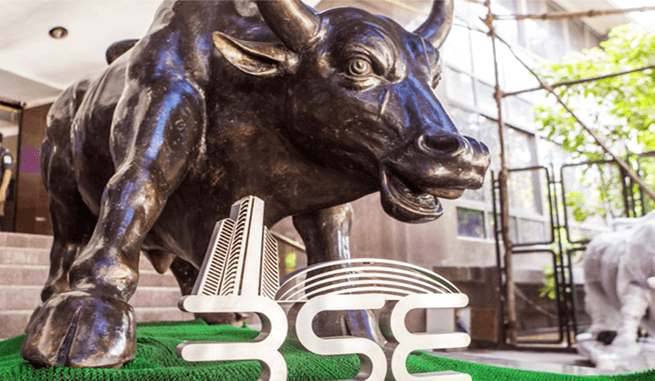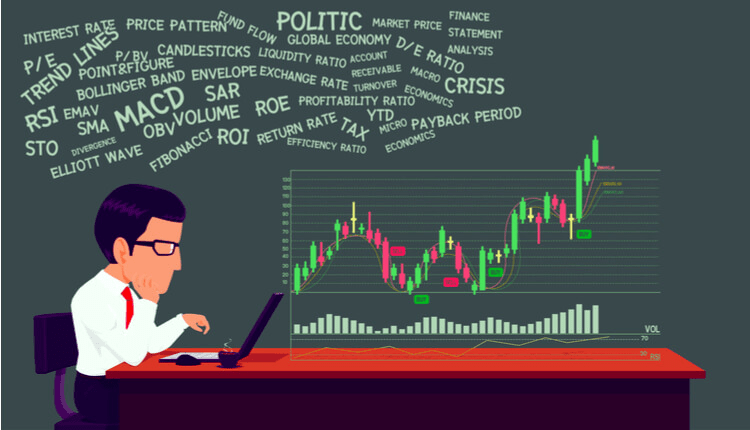Fundamental Analysis: The Long-Term Growth Indicator – Part 2
Jul 06, 2018 | 16:55 PM IST
Jul 06, 2018 | 16:55 PM IST

The key to success lies is in details. This phrase is the bedrock of fundamental analysis. Fundamental analysis is all about going into great details of the prospect and finding out the real value of the business. The process of fundamental analysis is seemingly simple but there are various challenges which can test the skills and patience of an analyte. In the previous chapter, we learned the basics of fundamental analysis. But looking at the depth of fundamental analysis, what we have done so far is just like dipping the toes. In this chapter and in the forthcoming chapters we will try to get neck-deep into understanding the finer nuances of fundamental analysis
Also, we will try to simplify the complex methodology of fundamental analysis so the laymen investors can carry out their own research and make intelligent investment decisions.
In the previous chapter, we discussed the qualitative analysis of the company which consists of qualitative aspects like a business plan, promoters profile and management competence. In this chapter, let's focus on how to carry out quantitative analysis. The objective of the fundamental analysis is always to understand whether the company has the financial strength, skilled human resources and a business model that will stand the test of time. One place where you will find all these details is the Annual Report of the company.
Contents
What Is Annual Report?
Every public company has the obligation to publish all its financials in the public domain. Some documents are shared on the quarterly basis while some are shared on the annual basis. The annual report, as the name suggests, the annual report is published annually. It is not just restricted to giving the financial overview of the company but it also focuses on important sections like Management Statement and Management Discussion & Analysis, etc.
Where To Find Annual Report?
There are various avenues to find the annual report but the most authentic source is the company's website. On every listed company's website, there is the "Investor" section. Under this section, you can find all the financial data of the present financial year as well last few financial years. You can download a PDF of the annual report from the website. Always make it point to download all the financial data from the company's official website. You can also get the hard copy of the annual report if you request for it.
Things To Look For In An Annual Report
The annual report is a big document usually running into hundreds of pages. It is virtually impossible to go through all the data mentioned in it. Also, all the information it contains is not always relevant to the investors. However, there are certain sections which you ought to check out. Following are some of the things that you can't afford to miss in an annual report.
Management Statement OR Chairmans Message
In this section, the company's highest office bearer i.e. the chairperson, the managing director or the chief executive officer (CEO) addresses the shareholders. Reading through this section you will get a perspective of how the person sitting at the top of the hierarchy sees his/her company. You will get a sense of whether he/she is a realist and does he/she has the competence to take the company forward. It is important here to read what's written but its equally important to read between the lines. In a chairmans message, one can expect to read a company's growth estimate for the forthcoming financial years. If there are any critical business decisions taken i.e. purchase of heavy machinery, land bought for expansion, big borrowings, etc. can find a running mention in the annual report.
Watch out for Unrealistic Claims
Whenever you read the future estimate which is not in line with the present numbers your alarm bell should start ringing. For example, if there is a company which has a history of growing 3-4% annually and without any significant new strategy, if the management claims it will grow 10-11% in the next financial year, it can be safe to assume that it is far-fetched and unrealistic. This also implies that the management doesn't have the understanding of the ground reality of the company. Such claims reflect poorly on the company's management.
Management Discussion & Analysis
Management Discussion & Analysis is perhaps the most important section of an annual report. In this section, the narrations usually happen in a top-down manner. In the beginning, you get to read about the global economic outlook. It takes account of the global macroeconomic trends and the business sentiment across the corporate world. Gradually, it starts to narrow down on the business and the prospects of the company. This part should be read in the context of the company, if the company is has a huge exposure or if the company just has the domestic business. Later, focus shifts on trends in the sector and what views the company has about it. It becomes an important part for the investors as the company expresses its views on its peers and the possible threats that they pose. Also, it talks about the opportunities in the sector which can make the company profitable.
Strategies and Other Miscellaneous Aspects
Once the core issue is addressed, the annual report gives an account of aspects like Human Resources report, R&D report, Technology report, etc. These parts are important but should be read in the context of the sector you are investing. For example, if you are reading the report of manufacturing company then it becomes important to understand the quality of the human resource. You have to check if the company has any labour issue which might escalate in future hampering the production and subsequently the margins of the company.
Key Financial Statements And How To Read Them?
The annual report is meant to give you an overview of the company. The annual report provides a perfect directional view of the company. You can decide whether you want to just scrap this prospect or want to explore more. However, the data provided by it is inadequate to take a buy call on any company. To further investigate the prospects of a company you have to look into its profit and loss statements, balance sheets and cash statements.
Profit & Loss Statement
The P&L statement, also known as the Income Statement, Statement of Operations, and Statement of Earnings, is the statement that shows what has transpired during a financial year. The P&L statement gives information on:
1. The revenue of the company for the given period i.e. yearly or quarterly.
2. Tax and depreciation.
3. The expenses incurred to generate the revenues.
4. The earnings per share number.
Balance Sheet
The Profit & Loss statement gives us information about the profitability of the company whereas the balance sheet provides information about the assets, liabilities, and the shareholders' equity. In a way, it will be fair to say that the P&L statement is a standalone statement as it talks about the profitability for the financial year under consideration. The same can't be said about the balance sheet as it is prepared on a flow basis, which means, it has financial information about the company as back as the time it got incorporated. Therefore, while the P&L sheds light on how the company performed in a certain financial year; the balance sheet talks about how the company has evolved financially over the years.
Things To Look For In A Balance Sheet
Ratio Of Current Asset To Current Liabilities -
The first thing you should check on a balance sheet is the current ratio. The current ratio is the ratio of current assets to current liabilities. It simply shows how liquid your working capital is to honour the payables in the financial year. For a company with healthy financial, it is important for current assets to be liquid enough to pay current liabilities. Generally, a current ratio of 1.5 to 3.0 is considered good.
Asset Turnover Ratio -
The asset turnover ratio signifies the company's efficiency in utilising the assets. A higher asset turnover ratio is considered positive for the company. It shows that the company is producing more assets in order to generate more profits.
Size And Cost Of Debt -
For any company to function smoothly, it has to opt for a loan. It's a normal practice in businesses across the world. However, it is important that the company has a responsible approach towards debt repayment. In a balance sheet, the size and cost of the debt are important factors as they directly comment on the solvency and the financial visibility of the company. How much debt is acceptable depends on the nature of the company. A manufacturing company would have higher debt compared to an IT company. As a manufacturing unit needs to invest in heavy machinery as well as in the workforce while an IT company just needs to have a competent and skilled workforce to get the job done. Generally, a debt to equity ratio of 2:1 is considered acceptable.
Look At Intangible Assets -
Tangible assets can be found on the asset side of the balance sheet. However, intangible assets are difficult to locate on a balance sheet. Goodwill, trademarks, brand value, patents are the examples of intangible assets. Even though they don't carry any weight on a balance sheet they are of great value when it comes to evaluating the value of the company. Therefore, a smart investor should not just keep track of assets which are reflecting on a balance sheet but also intangible assets which steadily keep building brand value of the company.
Contingent Liabilities -
One needs to be careful of contingent liabilities as these are the types of liabilities which don't reflect on a balance sheet but can become liabilities in the future, subject to certain conditions. Usually, pending legal expenses, the risk of open derivative positions are considered contingent liabilities.
Cash Flow Statement
Cash flow statement is one of the most critical financial document of the company. There are many fundamental analysts who reject a company even if the company is profitable but doesn't have enough cash. Now, this might sound a little confusing, if a company is profitable it ought to have cash, right? Not really. The profit that you see on a profit and loss statements is called book profit, it is not a statement of how much cash the company has. Therefore, the cash flow statement is the only document which reveals the company's true position in terms of liquidity. This is a fact, the companies which have high profits but low cash are deemed low in terms of valuations. Also, it reflects badly on the company's cash management.
Why Cash Flow Statement Is So Important
Gives A Clear Picture Of Company's Cash-
A P&L statement also gives a hint of the company's cash position but it also has non-cash elements like depreciation and amortisation which do not involve cash. In the same line, when a company issues zero coupon bonds, the interest it accrues is mentioned in the P&L statement but there is no real cash inflow. In the P&L statement, there are various elements which suggest that the company is getting income from various sources but not necessarily all these incomes mean actual cash flow. This is a point where a cash flow statement gains supremacy over other financial statements as it reveals an accurate position of a company's liquidity.
Watch Out For Cash From Operating -
Essentially, a cash flow statement has three sections - Operational activities, investing activities and financing activities. These are the activities through which a company generates cash. A thumb rule is that, in order to have healthy financials, every company should have a positive cash from operational activities. This reflects the company's operational efficiency which is the bedrock for any company to be successful in a long run.















